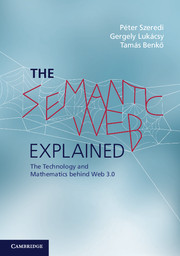6 - Implementing a simple DL reasoning engine
Published online by Cambridge University Press: 05 August 2014
Summary
This chapter presents an implementation of a description logic reasoning engine. Building on the theoretical foundations discussed in the previous chapters we present a program, written in the Haskell functional programming language, which is able to answer concept satisfiability queries over an arbitrary TBox using the ALCN language.
Following the introduction we give some examples illustrating the use of the program to be described. We then present the data structures of the program. Next, we describe the transformation of ALCN concepts into negation normal form and present the entry point of the tableau algorithm. The bulk of the chapter deals with the implementation of the main components of the tableau algorithm: the transformation rules and blocking. Finally, we describe the auxiliary functions used in the preceding sections and discuss possible improvements to the reasoning engine.
Introduction
The ALCN tableau algorithm considered in this chapter is implemented in Haskell, a functional programming language with lazy evaluation [65]. Haskell has been chosen for this task because it allows us to present the inference engine in a concise, simple and easily understandable way which is quite close to the mathematical notation employed in the previous chapters. No prior knowledge of Haskell is required to understand this chapter, since the various features of the Haskell programming language are explained at their first use.
- Type
- Chapter
- Information
- The Semantic Web ExplainedThe Technology and Mathematics behind Web 3.0, pp. 302 - 345Publisher: Cambridge University PressPrint publication year: 2014



